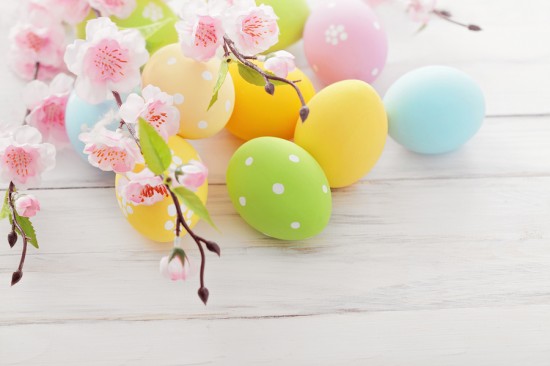
Just as Santa Claus has come to represent Christmas, a hopping life-size bunny with a basket full of colorful eggs is the quintessential image of Easter. It is believed that the original Easter bunny was probably associated with the Pagan equinox festival that predated Easter. The Saxons would devote the month of April to celebrating their goddess of spring and fertility, who was, not coincidentally, named Eostre. Eostre’s sacred animal was the hare and this is not surprising since the rabbit is one of the most common symbols of fertility and rebirth.
The colored eggs that are carried by today’s Easter bunnies have another, even more ancient origin. Eggs have long been associated with fertility and springtime festivals. This has gone on for so long that the precise roots of the association are unknown. It is recorded that ancient Romans and Greeks utilized eggs in festivals celebrating their resurrected gods. The egg also featured prominently in the Jewish rituals of Passover both anciently and still today the roasted egg has prominence on the Seder table as an essential symbol of springtime and rebirth.
Some scholars believe that the pairing of the hare and the egg together in Easter may also have Pagan roots. During springtime, when days and nights were equal length, the hare was identified with the moon goddess and the egg with the sun god. By pairing the two together it offered a kind of yin and yang to spring equinox celebrations.
The next historical entry for the pairing of the hare and the egg is found fifteen hundred years later in Germany. Young children would eagerly await the arrival of the Oschter Haws, a rabbit who delighted children on Easter morning by laying colored eggs in nests. This was also the first known time that the rabbit and egg were linked together in recent history.
The German tradition of the Oschter Haws migrated to America in the 1800s, most likely accompanying German immigrants, many of whom settled in Pennsylvania. Because of this, over the past 200 years the Oschter Haws or Easter Bunny has become the most commercially recognized symbol of Easter. But the German immigrants did not just bring the bunny. Eggs are also an important part of German Easter customs. It is thought that the practice of exchanging eggs may have started before people started to pay taxes. Eggs were seen as a way that people could pay their landlord who then had to give some to the poor people. In many German families today it is not just the children who receive eggs, but adults often exchange beautifully hand painted eggs. On Easter Sunday families have a special breakfast and parents hide Easter baskets that contain sweets, eggs, and small presents. German parents then call out to their children that the search for the Easter basket can begin.
Originally Easter eggs were painted with bright colors to represent the sunlight of spring. These eggs were often used in Easter-egg rolling contests or given as gifts. Because of the value of an egg in many cultures after they were colored and etched with various designs the eggs were exchanged by lovers and romantic admirers, much the same as valentines. In medieval times, eggs were traditionally given at Easter to the servants and were highly prized for their value.
Today in the United States the Easter egg takes many forms. Traditional hard boiled eggs are colored, hid and searched for on Easter morning but they are also joined by their candy and confectionery counterparts. Many people use plastic eggs that can be filled with sweets and small presents for children to find. A recent development in Easter eggs is the use of a small beeping device inside a plastic Easter egg that allows visually impaired children to join in the fun of the Easter egg hunt on Easter morning.
